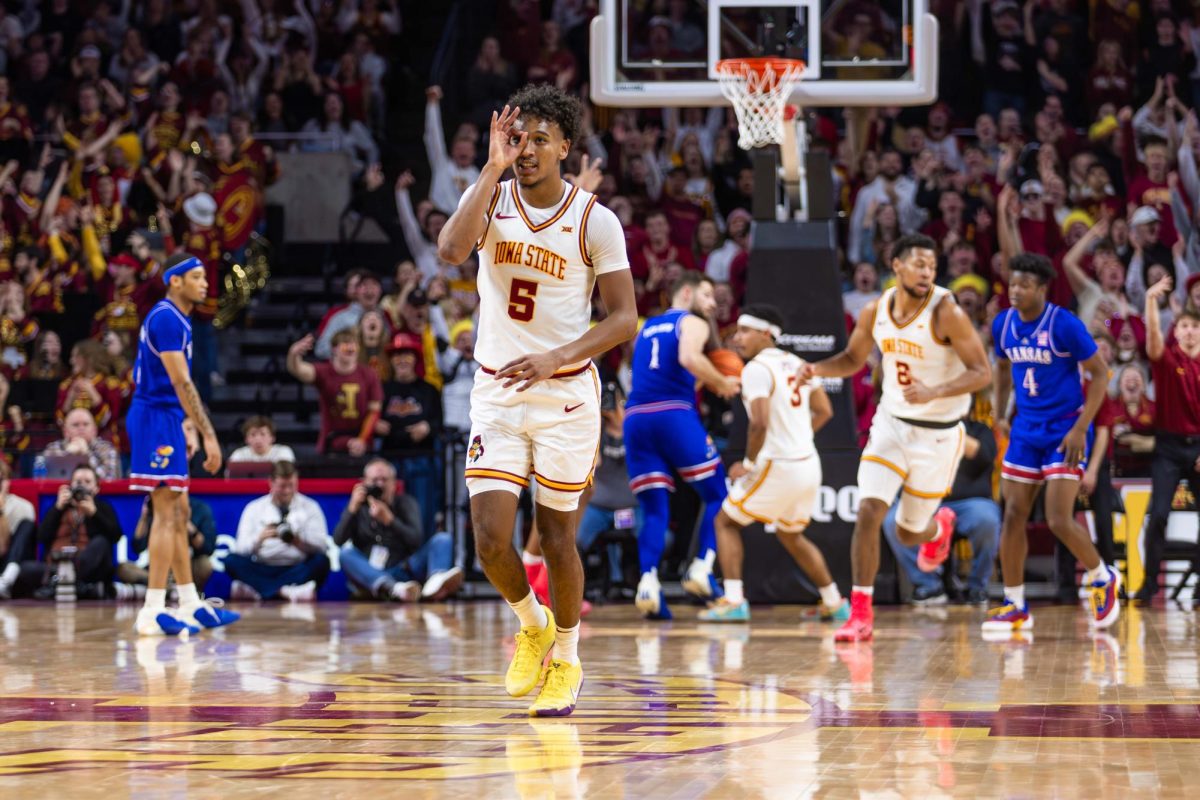Turf War
April 20, 2006
Each year around finals time, it is inevitable that some students will cut corners. Not in their classes, on their homework or essays, but somewhere their shortcuts will eventually be just as apparent – on campus.
“They have a lot on their mind; they might not think about what they are stepping in,” said Robert Currie, assistant director for facilities planning and management.
Currie and his staff are paying attention to where campus commuters are walking.
Each spring, campus maintenance officials try their best to replant trampled turf and put a bright summer face on campus. Each year, however, some of their efforts are trampled.
Currie said each spring begins with assessing the damage and deciding where to try to make repairs. The ravages of an Iowa winter, with campus walkers exploiting every navigable route between snowbanks, can leave an impression.
“One thing we try to do right away is give the campus that fresh look – take away the winter blahs,” Currie said.
Giving campus the spring look involves removing all large trash deposited over the winter and clearing the smaller debris left by melting snow. Luckily, Iowa State has discovered the perfect tool for the job.
“One of the things that [facilities planning and management] here at Iowa State does differently is we take our big brooms we use for clearing sidewalks in the winter and broom some of the grassy areas to move out all the grime that has accumulated,” Currie said.
He said pedestrian damage is inevitable – certain grassy areas are more prone to becoming ad hoc walking paths – that is, anywhere a few moments can be saved by treading off the paved sidewalk.
Thousands of yards of blue-and-green grass mats are spread on bare areas to repair damage to campus grass.
Sometimes what takes shape is a reclaimed patch of healthy turf, but soon after the damage starts to reappear.
“We see evidence of it,” Currie said. “If the ground is wet you see a nice big footprint in the middle of a muddy area.”
Despite the apparent futility, he said preserving the beauty of campus is a higher priority than straightening every curve campus users might have to navigate.
“We realize that we can’t have pavement everywhere. It always seems to be worthwhile to make the effort,” Currie said.
Staying off the grass may not be a primary concern to hurried walkers, but the effort is not lost on all.
Mario Limonciello, senior in electrical engineering, said he has taken an extra moment, if not an extra step, to consider the turf.
“Actually, I thought about it a few days ago, when I was walking on it,” Limonciello said.
Making the occasional detour to save a few precious seconds of time makes sense, but Currie said he has found at least one off-pavement trail, near the East Parking Deck, that seems to prize a quick getaway over common sense.
“They have to maneuver a steep path, which is not the safest route for people to use, but it is the shortest path from point A to point B,” Currie said.
Last winter, groundskeepers introduced a new strategy in the ongoing turf war: Erecting fences around several trouble spots.
“There will be instances where students, faculty or staff will be inhibited by snow fences,” Currie said. “We might put up chains to redirect traffic. Those are all things to prevent cow paths.”
Currie said he doesn’t consider the annual struggle to keep campus green a frustration, but an inherent part of his responsibilities as campus caretaker.
Although everyday campus walkers may take the environment for granted, Currie said one demographic is quick to recognize the effort invested in keeping campus beautiful.
“People who visit campus seem to view campus as being very well-kept,” Currie said.
“That lets our staff know that our efforts to go out and do the repairs are appreciated.”
The struggle to keep campus green is sure to continue into the indefinite future, but its victories and defeats remain a matter of aesthetic opinion.
Darcy O’Rourke, senior in biology, said campus trails are a part of the character of Iowa State.
“Some have names, like Gilman Trail,” O’Rourke said. “They’re sentimental.”






